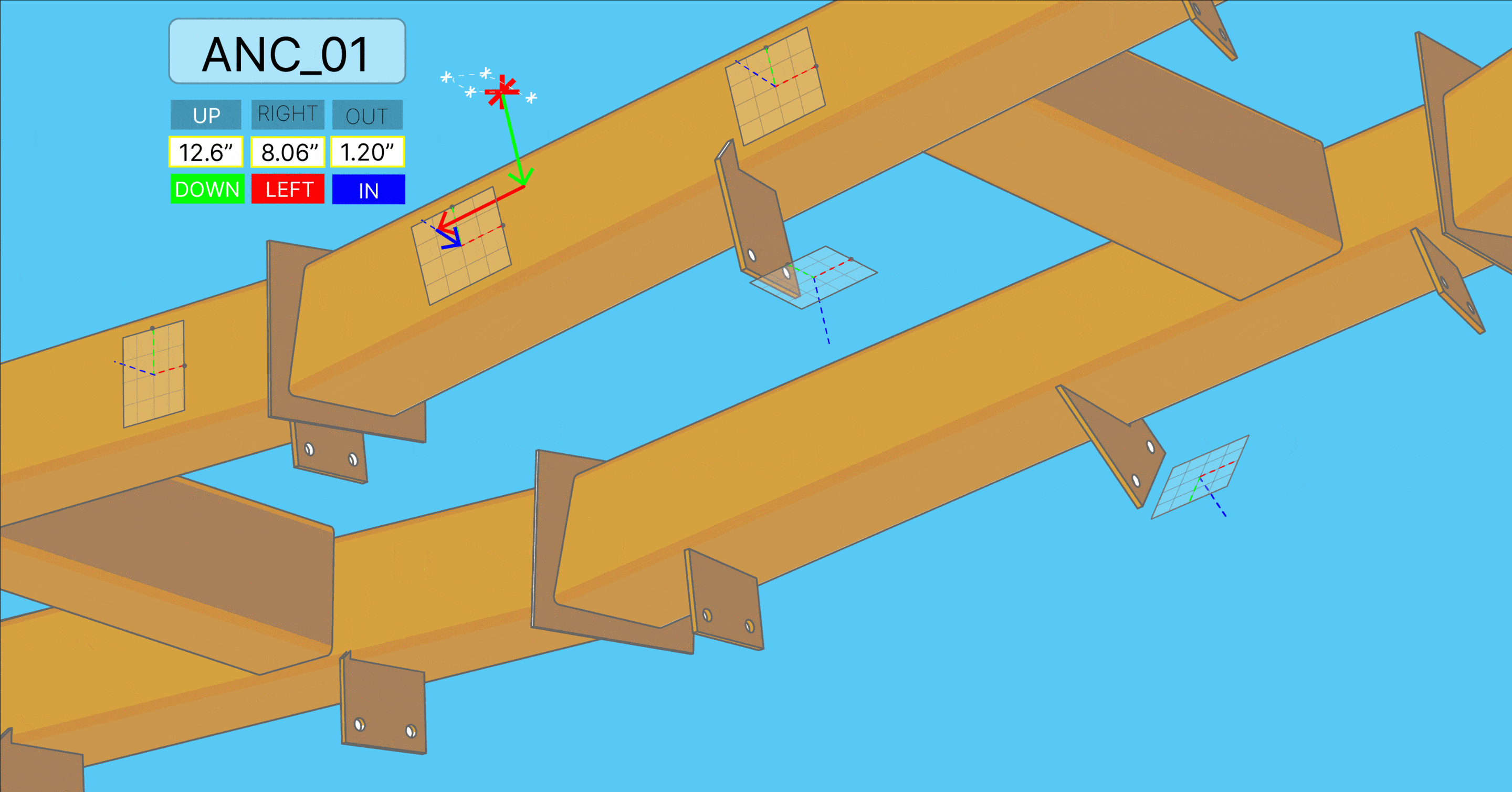R&D
SurveyLink
Field Installation Simplified
As projects increase in complexity, collaboration between design and construction teams is critical to success. Early in the design process many tools of collaboration and coordination exist, like collaborative redlining in Bluebeam Studio or cloud-based modeling platforms, but on the job site teams are fragmented.
Over the last 30 years Zahner has delivered hundreds of the world’s most iconic and challenging buildings. Zahner often develops software tools to analyze survey (or pointcloud) information and as-built conditions, but these computational patches only speed Zahner’s analysis portion and don’t address larger multi-trade coordination. To address this problem, the Zahner Labs team has created SurveyLink—a real-time data link between as-designed 3D models and as-built data collected in the field (Figure 1).
SurveyLink offers the same transformative potential to field crews that 3D modeling brought to design professionals in the office. The streamlined delivery method improves productivity by eliminating unnecessary remobilization of field crews and reduces the lengthy review periods typically associated with construction administration.
Key Benefits:
- Improved quality
- Lower construction costs
- Streamlined conflict resolution
- Safer job sites
- Expedited lean construction
As a project moves from the office to the job site, the tools for design and coordination diminish in sophistication and accessibility (Figure 2). In the design phase, architects and design engineers wield a suite of tools for computational modeling, finite element analysis (FEA), simulation, data sharing and 3D computer-aided design (CAD) visualization. Whereas when construction begins their counterparts on the job site operate with 2D documents, tape measures, levels, string, and occasionally surveying tools such as a Total Station.
When a project is complex and changes from one inch to the next, 2D documents are not comprehensive, resulting in much of the construction left up to interpretation. This leads to discrepancies between the as-designed 3D model and the as-built physical construction. This is further complicated when the design engineers responsible are located in offices geographically far from the construction site (Figure 3).
Figure 1: SurveyLink. On-site data streamed directly from Total Station to a web-based, collaborative 3D model.
Figure 2: Typical project data flow.
Figure 3: Current State—inefficient and expensive data exchange "loops" between office and field.
R&D
SurveyLink
Field Installation Simplified
As projects increase in complexity, collaboration between design and construction teams is critical to success. Early in the design process many tools of collaboration and coordination exist, like collaborative redlining in Bluebeam Studio or cloud-based modeling platforms, but on the job site teams are fragmented.
Over the last 30 years Zahner has delivered hundreds of the world’s most iconic and challenging buildings. Zahner often develops software tools to analyze survey (or pointcloud) information and as-built conditions, but these computational patches only speed Zahner’s analysis portion and don’t address larger multi-trade coordination. To address this problem, the Zahner Labs team has created SurveyLink—a real-time data link between as-designed 3D models and as-built data collected in the field (Figure 1).
Figure 1: SurveyLink. On-site data streamed directly from Total Station to a web-based, collaborative 3D model.
SurveyLink offers the same transformative potential to field crews that 3D modeling brought to design professionals in the office. The streamlined delivery method improves productivity by eliminating unnecessary remobilization of field crews and reduces the lengthy review periods typically associated with construction administration.
Key Benefits:
- Improved quality
- Lower construction costs
- Streamlined conflict resolution
- Safer job sites
- Expedited lean construction
Figure 2: Typical project data flow.
As a project moves from the office to the job site, the tools for design and coordination diminish in sophistication and accessibility (Figure 2). In the design phase, architects and design engineers wield a suite of tools for computational modeling, finite element analysis (FEA), simulation, data sharing and 3D computer-aided design (CAD) visualization. Whereas when construction begins their counterparts on the job site operate with 2D documents, tape measures, levels, string, and occasionally surveying tools such as a Total Station.
When a project is complex and changes from one inch to the next, 2D documents are not comprehensive, resulting in much of the construction left up to interpretation. This leads to discrepancies between the as-designed 3D model and the as-built physical construction. This is further complicated when the design engineers responsible are located in offices geographically far from the construction site (Figure 3).
Figure 3: Current State—inefficient and expensive data exchange "loops" between office and field.











 PHOTO ©️ Parrish Ruiz de Velasco (parrch.com)
PHOTO ©️ Parrish Ruiz de Velasco (parrch.com)



 © Fedora Hat Photography
© Fedora Hat Photography Photo by Andre Sigur | ARKO
Photo by Andre Sigur | ARKO





 Ɱ, Creative Commons Attribution-Share Alike 4.0 International license, edited.
Ɱ, Creative Commons Attribution-Share Alike 4.0 International license, edited.
